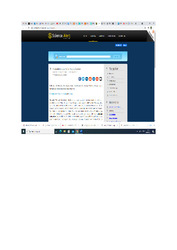| dc.contributor.author | Baitshotlhi, J.C. | |
| dc.contributor.author | Moreki, John Cassius | |
| dc.contributor.author | Tsopito, Christopher Mareledi | |
| dc.contributor.author | Nsoso, Shalaulani James | |
| dc.date.accessioned | 2021-07-08T07:59:29Z | |
| dc.date.available | 2021-07-08T07:59:29Z | |
| dc.date.issued | 2014 | |
| dc.identifier.citation | Baitshotlhi, J. C., Moreki, J. C., Tsopito, C. M., & Nsoso, S. J. (2014). Influence of stocking density on bone development in family chickens reared up to 18 weeks of age under intensive system. International Journal of Poultry Science, 13(11), 652. | en_US |
| dc.identifier.issn | 1682-8356 | |
| dc.identifier.uri | https://scialert.net/abstract/?doi=ijps.2014.652.656 | |
| dc.identifier.uri | http://researchhub.buan.ac.bw:80/handle/123456789/65 | |
| dc.description.abstract | This study investigated the influence of stocking density on bone development of family chickens up to 18 weeks of age. A total of 232 unsexed day-old family chicks were used in a completely randomized design. Birds were randomly assigned to four stocking densities, i.e., D1 (10 birds/m ), D2 (13 birds/m ), D3 2 2 (16 birds/m ) and D4 (19 birds/m ) in the first phase (0-6 weeks). Each treatment was replicated four times. 2 2 Two birds were slaughtered at 6, 12 and 18 weeks of age from each replicate to evaluate bone length, bone width, bone weight and bone chemical composition (ash weight, Ca, P and Mg). In the second phase (7 to 12 weeks) the stocking densities were 8 birds/m (D1), 11 birds/m (D2), 14 birds/m (D3) and 17 2 2 2 birds/m and 6 birds/m (D1), 9 birds/m (D2), 12 birds/m (D3) and 15 birds/m (D4) in the final phase (13 2 2 2 2 2 to 18 weeks). General Linear Model (GLM) procedure of Statistical Analysis System was used to estimate the differences between treatment means for different stocking densities. Stocking density in all the three phases did not have a significant (p>0.05) effect on bone dimensions and chemical composition. It is therefore concluded that stocking density had no influence on bone development of family chickens raised up to 18 weeks of age under intensive system probably due to slaughtering that occurred at six weekly intervals. It appeared that family chickens could be raised at a density of 15 birds/m in winter without any 2 detrimental effect on bone development and related parameters. Further studies should be done using identical densities throughout the research period to avoid disturbing the control which will make blocking by age possible. | en_US |
| dc.language.iso | en | en_US |
| dc.publisher | Asian Network for Scientific Information | en_US |
| dc.relation.ispartofseries | International Journal of Poultry Science;Vol. 13 (11): 652-656, 2014 | |
| dc.subject | Bone development | en_US |
| dc.subject | Family chickens | en_US |
| dc.subject | Intensive system | en_US |
| dc.subject | Stocking density | en_US |
| dc.title | Influence of stocking density on bone development in family chickens reared up to 18 weeks of age under intensive system | en_US |
| dc.type | Article | en_US |

